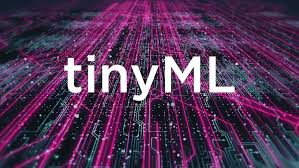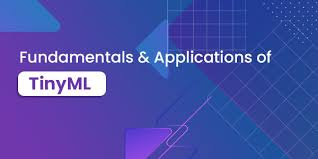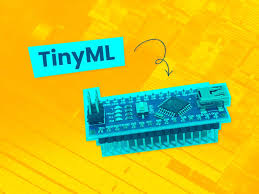
comprehensive guide to Tiny Machine Learning (TinyML): Empowering Edge Devices for Real-Time AI 2024
Tiny Machine Learning (TinyML) is rapidly becoming one of the fastest-growing fields in the realm of AI. It involves deploying machine learning (ML) models on tiny, resource-constrained devices such as microcontrollers and sensors, with a focus on low power consumption, real-time processing, and embedded AI. In this blog, we’ll explore the core concepts of TinyML, its applications, and the benefits it brings to edge devices.
What is TinyML?

TinyML refers to the implementation of machine learning algorithms on embedded systems that have very limited processing power, memory, and energy resources. Unlike traditional ML models that require powerful GPUs and cloud computing, TinyML runs locally on small devices, making it perfect for always-on, battery-powered, and real-time applications.
The core principles of TinyML include:
- Low Power Consumption: TinyML models are designed to be energy-efficient, allowing devices to operate on small batteries for extended periods.
- On-Device Processing: Rather than sending data to the cloud for processing, TinyML enables local data processing, ensuring faster inference and enhanced privacy.
- Sensor Analytics: TinyML is often used for real-time sensor data processing in fields like health monitoring, IoT, and industrial automation.
Applications of TinyML

TinyML brings AI capabilities to edge devices, which are deployed in environments where traditional models cannot be effectively used due to hardware limitations. Some of the notable applications of TinyML include:
1. Health Monitoring
- Atrial Fibrillation Detection: TinyML can be used to detect heart conditions like atrial fibrillation in real-time from ECG signals. This enables continuous, wearable health monitoring without needing a constant internet connection. By processing data on the device, TinyML allows for faster responses and better privacy control.
- Example: Atrial Fibrillation Detection on ECG using TinyML developed by UNIFEI, demonstrates how sensor data can be processed on low-power devices to detect abnormalities without relying on cloud infrastructure.
2. Environmental Sensing
- Vibration and Stress Detection: TinyML is used in industrial applications to detect mechanical stresses and anomalies, such as those found in machinery or transportation systems. It can identify early signs of malfunction, like bearing failure, by analyzing vibration data from sensors.
- Example: The Bearing Failure Detection system developed for industrial settings uses TinyML to analyze vibration data in real-time to predict failures and optimize maintenance schedules.
3. Sound Recognition
- Keystroke Sound Detection: TinyML models can also be used for recognizing sound patterns like keystrokes, enabling devices to identify activities based on audio inputs. This could be useful in security, assistive technologies, or smart homes.
- Example: The Keystroke Detection project uses TinyML to process audio signals from physical keyboard presses to identify different keystrokes.
4. Computer Vision
- Object Detection: TinyML can run computer vision models on embedded devices to detect objects in images or videos. It can be used for security systems, robotics, and even agriculture (e.g., disease detection in crops).
- Example: Using Arduino Portenta and OpenMV, TinyML can be used to perform real-time object detection and image classification on microcontrollers.
How TinyML Works

TinyML leverages the standard machine learning workflow while optimizing the model for resource-constrained systems. The general steps involved in the TinyML process include:
- Collect Data: Data is gathered from sensors such as cameras, microphones, accelerometers, or ECG monitors.
- Preprocess Data: The raw data is cleaned and transformed into a format suitable for model training.
- Design a Model: A machine learning model, such as a neural network, is designed. The model must be lightweight and efficient, tailored to run on the constrained hardware.
- Train the Model: The model is trained on large datasets, often in the cloud, using a full-power system.
- Optimize the Model: After training, the model is optimized (using techniques like quantization and pruning) to fit within the hardware constraints.
- Deploy the Model: The optimized model is deployed on the embedded device where it can perform inference locally in real time.
- Make Inferences: The model processes new data from sensors and provides real-time predictions or insights.
Challenges in TinyML
While TinyML offers a lot of benefits, there are some key challenges in the field:
- Model Size: TinyML models need to be small enough to fit on devices with limited memory. This requires careful design, pruning, and optimization.
- Power Constraints: Ensuring that the model operates efficiently without draining the device’s battery is crucial, especially for applications like wearables and IoT devices.
- Data Privacy: Since TinyML runs on-device, it ensures that sensitive data (such as health information) remains private and doesn’t need to be transmitted to the cloud for processing.
Optimizing TinyML Models
To make TinyML viable, developers often need to optimize the machine learning models. Some common optimization techniques include:
- Quantization: This involves reducing the precision of the numbers used in the model, making it smaller and faster without significantly compromising accuracy.
- Pruning: This technique removes unimportant parts of the model (e.g., neurons or weights) to reduce its size and improve inference speed.
- Compression: Techniques like knowledge distillation and weight sharing are used to compress the model further, allowing it to run on devices with very limited resources.
The Future of TinyML
As hardware continues to improve, the potential for TinyML is vast. We can expect to see even more powerful AI and machine learning capabilities integrated into small, low-power devices. This will have a profound impact on sectors like:
- Healthcare: Continuous, real-time health monitoring and diagnosis.
- Agriculture: Disease detection in crops and animal monitoring.
- Smart Homes: AI-driven automation and security without relying on the cloud.
Conclusion
TinyML is pushing the boundaries of AI by enabling machine learning on resource-constrained devices. Its ability to perform local data processing on low-power, always-on devices opens up numerous applications across various industries. By integrating AI directly into the edge, TinyML allows us to create smarter, more efficient systems that can run in real-time, with minimal power consumption and improved privacy.
As this field grows, TinyML is set to revolutionize industries from healthcare to agriculture, unlocking new possibilities for intelligent devices and services that are more connected, efficient, and scalable.